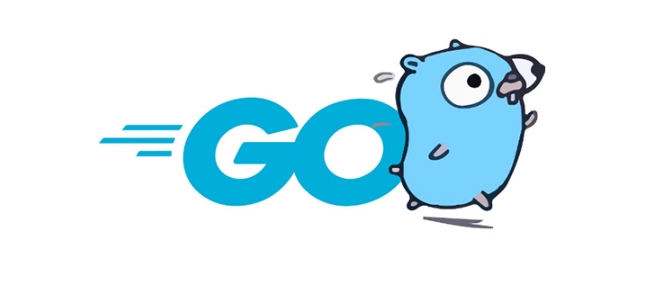Follow standard Go project layout using directories like cmd, internal, pkg, and api to separate concerns and ensure scalability. 2. Organize code by domain (e.g., user, order) for larger applications to reduce coupling, or by layer (handler, service, repository) for simpler apps. 3. Use Go modules with semantic import paths by initializing with go mod init and importing packages via full module paths to ensure clean, consistent dependencies. 4. Keep main.go minimal by limiting it to configuration loading, dependency injection, and application startup. 5. Separate business logic from side effects by placing testable functions in service layers rather than handlers or main. 6. Include supporting files like Makefile, .gitignore, README.md, and Dockerfile to improve developer experience and maintainability. Following these practices ensures a maintainable, testable, and scalable Go project structure.

Structuring a Go project well is key to maintainability, testability, and scalability—especially as your project grows. While Go doesn’t enforce a strict layout, there are widely accepted conventions and best practices that help teams collaborate effectively. Here’s how to structure a Go project in a practical and scalable way.

1. Follow Standard Go Layout (with cmd, internal, pkg, etc.)
A common and scalable structure for Go projects looks like this:
my-project/ ├── cmd/ │ └── myapp/ │ └── main.go ├── internal/ │ ├── app/ │ └── pkg/ ├── pkg/ │ └── public/ ├── pkg/ │ └── logging/ ├── api/ │ └── v1/ ├── config/ ├── internal/ │ └── database/ ├── pkg/ │ └── auth/ ├── go.mod ├── go.sum ├── Makefile └── README.md
Let’s break down the key directories:

cmd/myapp/main.go
Entry point for your application. Each binary goes in its own subdirectory undercmd. Keepmain.gominimal—just setup and startup logic.internal/
Private code that should not be imported by other projects. Go enforces this: packages underinternalcan only be imported by parent packages. Use this for app-specific business logic.
pkg/
Reusable public packages that other projects can import. These should be well-designed, tested, and documented. Think of them as libraries.api/
API definitions (e.g., OpenAPI/Swagger specs, protobuf files, or REST route docs). Versioned subdirectories likev1/,v2/help manage breaking changes.config/
Configuration files, defaults, and schema (e.g., YAML, JSON, or code-based config structs).go.modandgo.sum
Required for Go modules. Define your module path and dependencies here.
2. Organize by Domain or Layer (Avoid "God" Packages)
Don’t dump everything into a single src/ or controllers/ folder. Instead, organize by:
Domain (Recommended for larger apps)
Group code by business domain:internal/ ├── user/ │ ├── user.go │ ├── user_service.go │ └── user_repository.go ├── order/ │ ├── order.go │ └── order_service.go
Layer (Classic MVC-style, fine for smaller apps)
Group by technical role:internal/ ├── handler/ ├── service/ └── repository/
For most real-world services, a domain-driven approach scales better and reduces coupling.
3. Use Go Modules and Semantic Import Paths
Always initialize your project with:
go mod init github.com/yourname/my-project
This sets the module path, which should match your repository URL. It enables clean imports like:
import "github.com/yourname/my-project/internal/user"
Avoid relative imports. Use full module paths consistently.
4. Keep main.go Thin
Your main.go should do three things:
- Load configuration
- Wire up dependencies (database, services, etc.)
- Start the server (or run the command)
Example:
// cmd/myapp/main.go
package main
import (
"log"
"my-project/internal/app"
"my-project/internal/config"
)
func main() {
cfg := config.Load()
app := app.New(cfg)
if err := app.Start(); err != nil {
log.Fatal(err)
}
}This keeps the entry point clean and testable.
5. Separate Testable Logic from Side Effects
Put business logic in testable functions, not buried in HTTP handlers or main. For example:
// internal/user/service.go
func (s *UserService) CreateUser(email string) (*User, error) { ... }Then in a handler:
func (h *UserHandler) Create(w http.ResponseWriter, r *http.Request) {
user, err := h.service.CreateUser(email)
// handle err, write response
}This makes unit testing straightforward.
6. Add Common Supporting Files
Include these for better developer experience:
Makefile– for common tasks:build: go build -o bin/app cmd/myapp/main.go test: go test -v ./... run: go run cmd/myapp/main.go.gitignore– ignorebin/,tmp/, IDE filesREADME.md– how to build, run, and testDockerfile– if containerizing- ? Use
go mod tidyregularly to clean up dependencies. - ? Write tests in
_test.gofiles alongside the code. - ? Avoid circular imports by designing clean boundaries.
- ? Use
gofmtorgoimportsto keep code style consistent.
Final Tips
There’s no one-size-fits-all, but this structure works well for APIs, CLIs, and microservices. Start simple, then evolve as needed.
Basically: thin main, domain structure, internal vs pkg, and proper modules. That’ll get you 90% of the way.
The above is the detailed content of How do you structure a Go project?. For more information, please follow other related articles on the PHP Chinese website!

Hot AI Tools

Undress AI Tool
Undress images for free

Undresser.AI Undress
AI-powered app for creating realistic nude photos

AI Clothes Remover
Online AI tool for removing clothes from photos.

Clothoff.io
AI clothes remover

Video Face Swap
Swap faces in any video effortlessly with our completely free AI face swap tool!

Hot Article

Hot Tools

Notepad++7.3.1
Easy-to-use and free code editor

SublimeText3 Chinese version
Chinese version, very easy to use

Zend Studio 13.0.1
Powerful PHP integrated development environment

Dreamweaver CS6
Visual web development tools

SublimeText3 Mac version
God-level code editing software (SublimeText3)

Hot Topics
 Strategies for Integrating Golang Services with Existing Python Infrastructure
Jul 02, 2025 pm 04:39 PM
Strategies for Integrating Golang Services with Existing Python Infrastructure
Jul 02, 2025 pm 04:39 PM
TointegrateGolangserviceswithexistingPythoninfrastructure,useRESTAPIsorgRPCforinter-servicecommunication,allowingGoandPythonappstointeractseamlesslythroughstandardizedprotocols.1.UseRESTAPIs(viaframeworkslikeGininGoandFlaskinPython)orgRPC(withProtoco
 Understanding the Performance Differences Between Golang and Python for Web APIs
Jul 03, 2025 am 02:40 AM
Understanding the Performance Differences Between Golang and Python for Web APIs
Jul 03, 2025 am 02:40 AM
Golangofferssuperiorperformance,nativeconcurrencyviagoroutines,andefficientresourceusage,makingitidealforhigh-traffic,low-latencyAPIs;2.Python,whileslowerduetointerpretationandtheGIL,provideseasierdevelopment,arichecosystem,andisbettersuitedforI/O-bo
 Is golang frontend or backend
Jul 08, 2025 am 01:44 AM
Is golang frontend or backend
Jul 08, 2025 am 01:44 AM
Golang is mainly used for back-end development, but it can also play an indirect role in the front-end field. Its design goals focus on high-performance, concurrent processing and system-level programming, and are suitable for building back-end applications such as API servers, microservices, distributed systems, database operations and CLI tools. Although Golang is not the mainstream language for web front-end, it can be compiled into JavaScript through GopherJS, run on WebAssembly through TinyGo, or generate HTML pages with a template engine to participate in front-end development. However, modern front-end development still needs to rely on JavaScript/TypeScript and its ecosystem. Therefore, Golang is more suitable for the technology stack selection with high-performance backend as the core.
 How to install Go
Jul 09, 2025 am 02:37 AM
How to install Go
Jul 09, 2025 am 02:37 AM
The key to installing Go is to select the correct version, configure environment variables, and verify the installation. 1. Go to the official website to download the installation package of the corresponding system. Windows uses .msi files, macOS uses .pkg files, Linux uses .tar.gz files and unzip them to /usr/local directory; 2. Configure environment variables, edit ~/.bashrc or ~/.zshrc in Linux/macOS to add PATH and GOPATH, and Windows set PATH to Go in the system properties; 3. Use the government command to verify the installation, and run the test program hello.go to confirm that the compilation and execution are normal. PATH settings and loops throughout the process
 Resource Consumption (CPU/Memory) Benchmarks for Typical Golang vs Python Web Services
Jul 03, 2025 am 02:38 AM
Resource Consumption (CPU/Memory) Benchmarks for Typical Golang vs Python Web Services
Jul 03, 2025 am 02:38 AM
Golang usually consumes less CPU and memory than Python when building web services. 1. Golang's goroutine model is efficient in scheduling, has strong concurrent request processing capabilities, and has lower CPU usage; 2. Go is compiled into native code, does not rely on virtual machines during runtime, and has smaller memory usage; 3. Python has greater CPU and memory overhead in concurrent scenarios due to GIL and interpretation execution mechanism; 4. Although Python has high development efficiency and rich ecosystem, it consumes a high resource, which is suitable for scenarios with low concurrency requirements.
 How to build a GraphQL API in golang
Jul 08, 2025 am 01:03 AM
How to build a GraphQL API in golang
Jul 08, 2025 am 01:03 AM
To build a GraphQLAPI in Go, it is recommended to use the gqlgen library to improve development efficiency. 1. First select the appropriate library, such as gqlgen, which supports automatic code generation based on schema; 2. Then define GraphQLschema, describe the API structure and query portal, such as defining Post types and query methods; 3. Then initialize the project and generate basic code to implement business logic in resolver; 4. Finally, connect GraphQLhandler to HTTPserver and test the API through the built-in Playground. Notes include field naming specifications, error handling, performance optimization and security settings to ensure project maintenance
 Choosing a Microservice Framework: KitEx/GoMicro vs Python Flask/FastAPI Approaches
Jul 02, 2025 pm 03:33 PM
Choosing a Microservice Framework: KitEx/GoMicro vs Python Flask/FastAPI Approaches
Jul 02, 2025 pm 03:33 PM
The choice of microservice framework should be determined based on project requirements, team technology stack and performance expectations. 1. Given the high performance requirements, KitEx or GoMicro of Go is given priority, especially KitEx is suitable for complex service governance and large-scale systems; 2. FastAPI or Flask of Python is more flexible in rapid development and iteration scenarios, suitable for small teams and MVP projects; 3. The team's skill stack directly affects the selection cost, and if there is already Go accumulation, it will continue to be more efficient. The Python team's rash conversion to Go may affect efficiency; 4. The Go framework is more mature in the service governance ecosystem, suitable for medium and large systems that need to connect with advanced functions in the future; 5. A hybrid architecture can be adopted according to the module, without having to stick to a single language or framework.
 Go sync.WaitGroup example
Jul 09, 2025 am 01:48 AM
Go sync.WaitGroup example
Jul 09, 2025 am 01:48 AM
sync.WaitGroup is used to wait for a group of goroutines to complete the task. Its core is to work together through three methods: Add, Done, and Wait. 1.Add(n) Set the number of goroutines to wait; 2.Done() is called at the end of each goroutine, and the count is reduced by one; 3.Wait() blocks the main coroutine until all tasks are completed. When using it, please note: Add should be called outside the goroutine, avoid duplicate Wait, and be sure to ensure that Don is called. It is recommended to use it with defer. It is common in concurrent crawling of web pages, batch data processing and other scenarios, and can effectively control the concurrency process.







